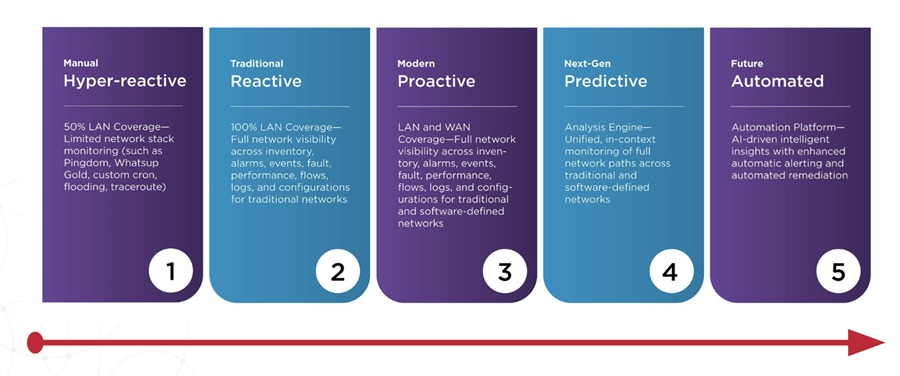
The hardest part of managing and resolving an incident on the network is that users or customers know about incidents before they do, according to 30.1% of survey respondents participating in The 2018 State of Network Management report from Kentik.
Another 26% reported that their biggest challenge with incident response is that data exists, but they can’t access or analyze it easily. Without the ability to analyze network data in real time, network professionals cannot mitigate issues before they affect users and customers.
More study findings:
Automation is trending
35% of respondents cited automation as the most important network trend right now. Yet, only 15% of respondents said their organization is prepared for it.
AI & ML buzzword fatigue
Despite the industry buzz around artificial intelligence (AI) and machine learning (ML), less than 1% of respondents marked it as a most important trend. However, 45.2% of respondents do perceive it to be helpful for network management.
User experience network challenges
Data breach was "the biggest network worry" (33.1% of responses). However, user experience was right behind it (28.8% of responses). As more organizations conduct business online, network outages are now a direct tie to customer success for many companies across industries.
Proliferation of tools for cloud visibility
There has been a huge proliferation of tools to manage cloud and internet dependencies. As a result, many organizations are trying various combinations of tools to manage the visibility challenge. Network traffic analytics appeared as the most commonly used way network professionals (28.3%) are managing the challenge.
Shared tools challenge becomes more real
A majority of respondents (67%) agreed that using the same stack of tools to manage both network performance and security could significantly improve operational efficiencies. However, only about 40% of respondents (39.5%) said their organization is using the same stack of tools to manage both network performance and network security.
"Between multiprotocol label switching (MPLS) and software-defined networking (SDN), there were about 15 years where the networking world was pretty static. Right now we’re in a world moving as fast as the ISP world did back in the 90s. Every few weeks there’s something new," said Avi Freedman, co-founder and CEO of Kentik. "While the industry’s pace of innovation offers guaranteed excitement, our survey findings also reveal that organizations ultimately need a better understanding of their infrastructure in order for their businesses to benefit from all of the new developments."
“With increased business reliance on internet connectivity, the network world has and will continue to get increasingly complex,"he added. "We’re just in the early stages of how our industry will need to transform,” added Freedman.
Survey Methodology: Kentik’s findings are based on responses from 531 network professionals surveyed during Cisco Live 2018. The respondents spanned more than 12 industries, including education, government, healthcare, finance, retail, software, telecommunications and transportation sectors. Respondents varied in titles from C-level, to SVP/VPs, directors, and managers, to network and security engineers, architects, and associates. The majority of respondents came from organizations with 1,000 or more employees.


